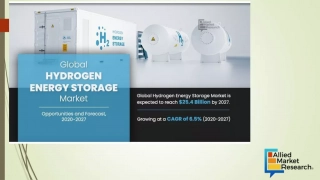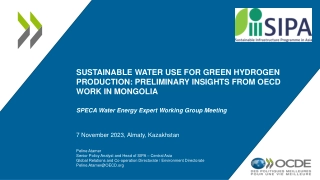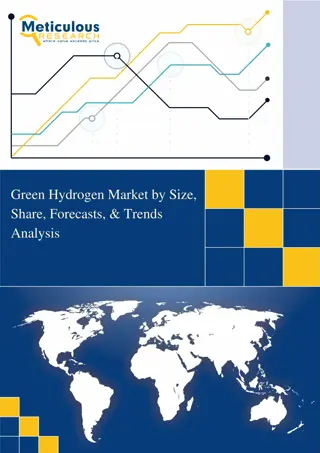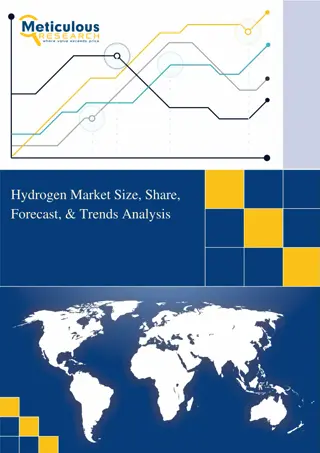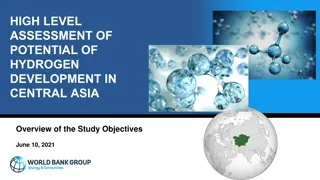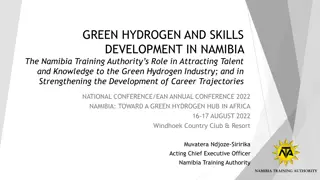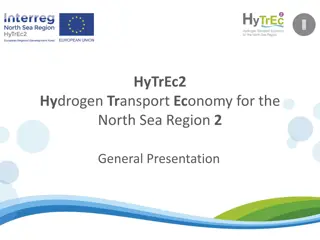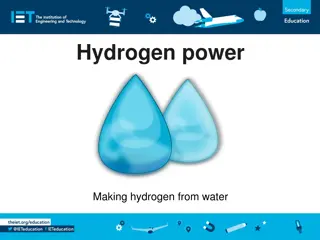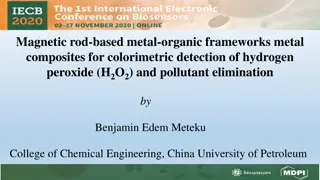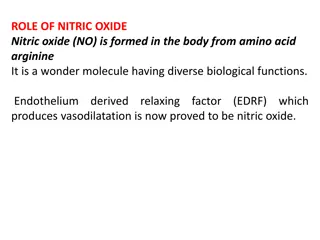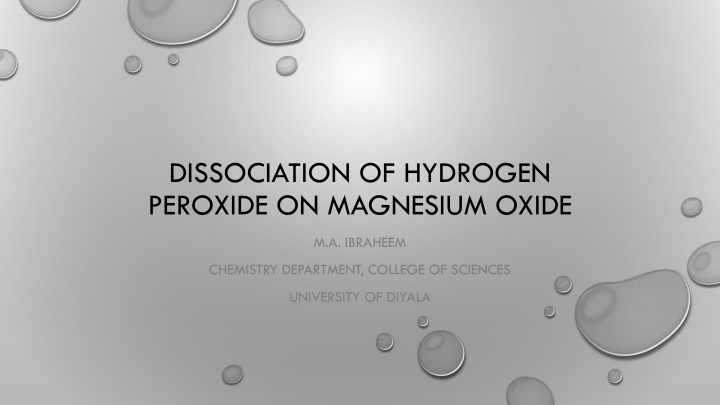
Hydrogen Peroxide Dissociation on Magnesium Oxide - Kinetic Study Experiment
Explore the kinetic study of the dissociation of hydrogen peroxide on magnesium oxide, focusing on reaction rate constants and catalysis. Learn about the experimental procedure, objectives, and analysis involved in this fascinating chemistry experiment.
Download Presentation

Please find below an Image/Link to download the presentation.
The content on the website is provided AS IS for your information and personal use only. It may not be sold, licensed, or shared on other websites without obtaining consent from the author. If you encounter any issues during the download, it is possible that the publisher has removed the file from their server.
You are allowed to download the files provided on this website for personal or commercial use, subject to the condition that they are used lawfully. All files are the property of their respective owners.
The content on the website is provided AS IS for your information and personal use only. It may not be sold, licensed, or shared on other websites without obtaining consent from the author.
E N D
Presentation Transcript
DISSOCIATION OF HYDROGEN PEROXIDE ON MAGNESIUM OXIDE M.A. IBRAHEEM CHEMISTRY DEPARTMENT, COLLEGE OF SCIENCES UNIVERSITY OF DIYALA
INTRODUCTION SOME REACTION ARE DERIVED SLOWLY THERE FOR STEEPING UP THE RATE OF THESE REACTIONS IS A MEANINGFUL FACTOR. ADDING ASSISTANCE MATERIAL TO THE REACTION IS WELL KNOWN AS CATALYSIS AND THE MATERIAL WHICH DO THE ACTION IS NAMED AS CATALYST. THE CATALYST WILL PLAY AN IMPORTANT ROLE BY REDUCING THE ACTIVATED ENERGY OF A REACTION. MAINLY TWO TYPES OF CATALYST ARE KNOWN A HETEROGENOUS CATALYST WHERE THE CATALYST AND THE REACTANTS ARE BELONGED TWO DIFFERENT PHASES , WHILE THE SECOND TYPE IS THE HOMOGENOUS CATALYST AND HERE ALL THE SUBSTANCES (CATALYST AND REACTANT)IN THE REACTION CAME WITHIN THE SAME PHASE. ITS IMPORTANT TO STUDY THE KINETIC OF THE CATALYTIC REACTION, IN SUCH GENRE OF STUDY WE CAN GET A GOOD INFORMATION ABOUT THE EFFICIENCY OF AN CATALYST AMONG MANY OTHER CATALYTIC MATERIAL
OBJECTIVE OF THE EXPERIMENT DETERMINATION OF THE REACTION RATE CONSTANT AND ITS ORDER IN THIS EXPERIMENT A HETEROGENOUS REACTION WILL BE STUDY KINETICALLY . THE REACTION INCLUDES DISSOCIATION OF HYDROGEN PEROXIDE ON THE MAGNESIUM OXIDE. THE RATE OF SUCH REACTION IS DEPENDS ON THE CONCENTRATION OF THE REACTANT AND THE SURFACE AREA OF THE CATALYST AS WELL AS THE PHYSICAL AND THE CHEMICAL PROPERTIES OF IT ???2?2? + 12?2 ?2?2 THE REACTION IS GOING TO BE CHASED BY OBTAINED THE REMAIN OR THE NON DISSOCIATED OF HYDROGEN PEROXIDE BY TITRATED WITH AN ACIDIC SOLUTION OF KMNO4. OR BY MEASURING THE AMOUNT OF O2 LIBERATED. AS THE REACTION IS A FIRST ORDER REACTION WE CAN USE THE EQUATION BELOW TO CALCULATE K ? =2.303 ? ??? ? ? ?
Procedure 1. Take 0.5 ml of 40% H2O2 by a pipette and transfer it to 100ml of volumetric flask then filled the flask to the mark with D water 2. Transfer the solution from step 1 to abeaker of 250ml then added an accurate amount of 1g MnO2. 3. After 5min a 10 ml of the upper part of the reaction will take with pipette and transfer to a 250ml conical flask then 19ml of 1.5N of H2SO4 need to added afterward the mixture will be titrated agenised 0.5M of KMNO4.use the methyl blue indicator or you can use the change of KMNO4 colour as an indicator. 4. Repeat the same process each 5 min Results Put the result in a table like the below .t1 min .t2 sec Ttotal=t1 +t2 V=a-x Lin(a-x) 5 10 15 20 25 30
Draw a graph between time and ln a-x Where a-x = the volume of titration 12 10 Slop=-k1 8 lin a-x 6 4 2 0 0.00 5.00 10.00 15.00 t (min) 20.00 25.00 30.00 35.00

